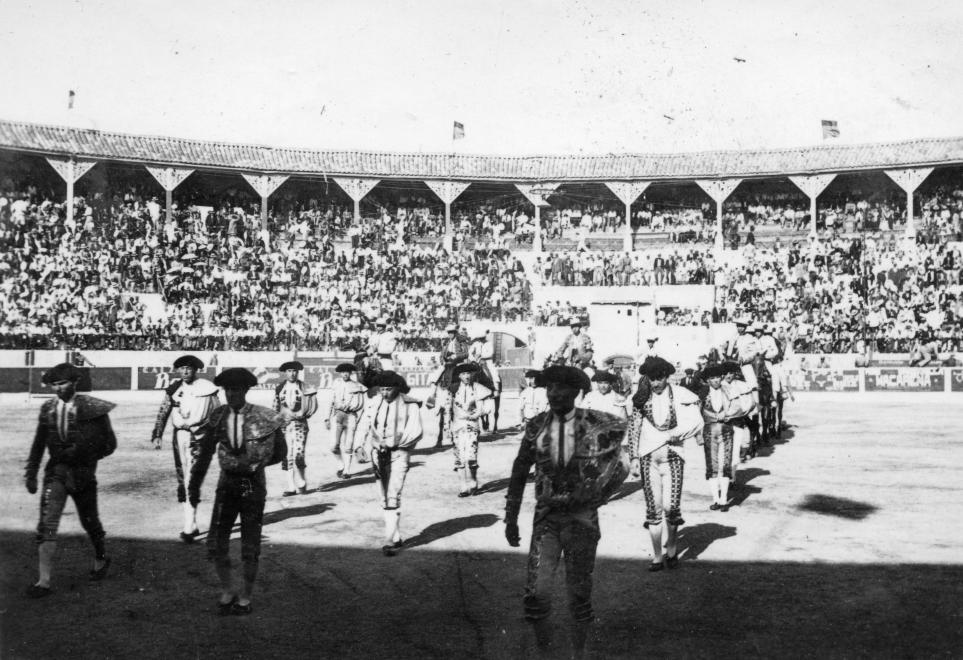What was Budapest like 100 years ago? 5+1 interesting things about Hungary’s capital

All you need to do is take a big walk in Budapest, and you will be able to tell stories all night long about what happened during your little trip in the city. Usually, there are so many things happening at once in Hungary’s bustling capital that it is hard to keep track of them. It was no different about 100 years ago either.
Magyarországom brought you a total of 6 interesting stories about Budapest from over 100 years ago. These stories show very well what life was like in the capital around the turn of the 20th century.
1. Bullfight in Budapest
Yes, you read that right, there was a bullfight in Budapest, real Spanish style. It was held between 11 June and 14 July in 1904 in a temporary arena at the drained lake of Városliget (City Park). For the occasion, Spanish toreadors were invited. At first, only a couple of people were interested, but at the end, more and more spectators came, but due to a serious accident and concerns of animal rights, the event was never arranged again.
2. Pig slaughter on Margit-sziget (Margaret Island)
If you think about Margaret Island, the first thing that comes to mind is definitely not the slaughtering of a pig, even though it is a tradition in Hungary. People usually remember this place by the beautiful panorama, the fountain, and many good-weather leisure programs. However, about 100 years ago, there was a pig slaughter held on Margaret Island. It was organised by none other than Gyula Krúdy, a great Hungarian writer who lived there between 1918 and 1930. By the way, do you know how the island in the middle of the Danube got its name? If you want to know, check out this article:
3. Instead of a bell toll at noon, there were sounds of shots
The famous noon bell toll became a tradition after the triumph at Nándorfehérvár on 22 July in 1456. Tolling the bell at noon has a long history, but there were times when it was arranged a little differently. At the turn of the century in Buda, this tradition at noon was not signalled by a bell toll, but by a shot by the caretaker in the yard of today’s Toldy Ferenc High School.
4. People could only sit on trams
Before the coronavirus, you would hardly ever fit on the first trams, buses, or subways in the morning without being squished on the busy public transportation, let alone find any empty seats. However, just after the turn of the century, in 1903, a decree quasi abolished the concept of standing on trams in Budapest. Only as many people could travel on the tram as there were seats available. It is almost unimaginable in modern days.
5. Paid benches
It was a good thing that everyone had sat enough on trams because, at the beginning of the 20th century, people who wanted to sit on a public bench in Pest had to pay for it in order to be able to do so. Those benches were owned by Sándor Buchwald, an iron and metal furniture manufacturer. Employees who were nicknamed ‘Buchwald nénik’ (~Buchwald aunties) walked from bench to bench so that they could collect the fee from everyone.
+1 Pestbuda
Although this dates back a little further than 100 years, it is definitely worth mentioning. In 1873, when the three cities of Pest, Buda, and Óbuda were merged together, the newly formed city was almost renamed Pestbuda, but evidently, they decided against it.
Source: Magyarorszagom.hu




I must say that I love Budapest as well the rest of the country. My wife and I were born in Canada to
migrant parents born in Hungary. We still have close communication with many of relatives ! We know
much of country having travelled there approximately 20 times ! We love the music !!!!!
However, my wife and I are getting rather old, so we may not be able to travel there again, We are sorry
about that !
CLB & RMB
Thank you for the interesting info. It is such a relief to read about something different than the COVID 19.
Lovely sharing Charles & Rosemarie,
We are Australian born from British – Danish backgrounds, who migrated to Australia, in the late 19th century and early 20th century.
We fell in Love with Budapest, Hungary some years back, on a 6 week European Trip from Australia.
We included Budapest (2) twice on our itinerary on trips to Europe after our first visit, and the Love grew.
We decided, why not make Budapest an Eastern European Home, then when we wish to venture farther afield, the closeness compared to travelling from Australia, made sense, especially as the years pas us on by.
The Hungarian people have embraced us and we feel accepted by them and we of course respect and love them muchly.
It is a beautiful country to travel around, and the inter-city train services are splendid for our needs.
Lifestyle is fabulous market halls – street markets, which we love as cooking at home is very much us and still discovering new and unusual Hungarian recipes full of paprika of course, we enjoy immensely.
We reside in District V, a beautiful part of the City of Budapest to live, practically, our house is on the Danube, overlooking the Castle, which gives us plenty of walking exercise.
This novel coronvirus pandemic, has effected lifestyle in Hungary as it has Globally, with us living under restriction of time for supermarkets and other places taken for granted prior to this pandemic outbreak.
We survive and trust things for us all can start to improve and we ALL can move out and about with restrictions being adjusted, and a little life normality returns.
Stay Well – You and Yours.
Hmmm. I bet if you lived in District 8, Újpest or Kispest Köbanya, in one of those crumbling system built concrete horrors, your rose tinted spectacles would soon cloud over.
I first entered Hungary in October of 1982. I was traveling around Europe and had met two people a year earlier in Los Angeles. I ended up staying with them, Poproczi Árpad and his wife Déak Anna, in their flat on Csengery utca. I had only a 48-hour visa but stayed a week. I met many people through Árpi (particularly Varga Zoltan and Vas Tamas) and, therefore found reason to return to Hungary for many years thereafter.
When I retired I knew that I wanted to live in Europe and the location quickly ended up being Budapest, though I have no Hungarian ancestry. By this time, 2002, I knew more people in Budapest, though I had traveled extensively in the intervening 20 years, than any other city, besides Los Angeles.
In 2005 I bought a flat in Krisztina Varos, with the assistance of Zoli’s wife, Walton Ági, and settled in to trying to learn Hungarian, which has to be the most difficult language on Earth!
My decision to pick Budapest was solidified when, the day after taking possession of my new flat, I was in the CBA at Déli Páludvar to get some groceries. The line was long and when I finally got to the cashier I was having difficulty with the money. The cashier asked me in which hotel I was staying. I told her, in VERY poor Hungarian, that I was not in a hotel, that I had purchased a flat near there. She then told me to take my time, that I needed to learn the currency and that owning a flat and trying to learn Hungarian, I was now one of them, that I was a Magyar. It was a level of acceptance I had never expected from a stranger. I currently live between Hungary and California.
Thank you all very much for your heartfelt comments :). I am happy to see that some of you fell in love with our country and was accepted by people. Unfortunately, sometimes Hungarians can be raw to strangers, I am happy to hear you have met the right people.
I wish you all the best! 🙂